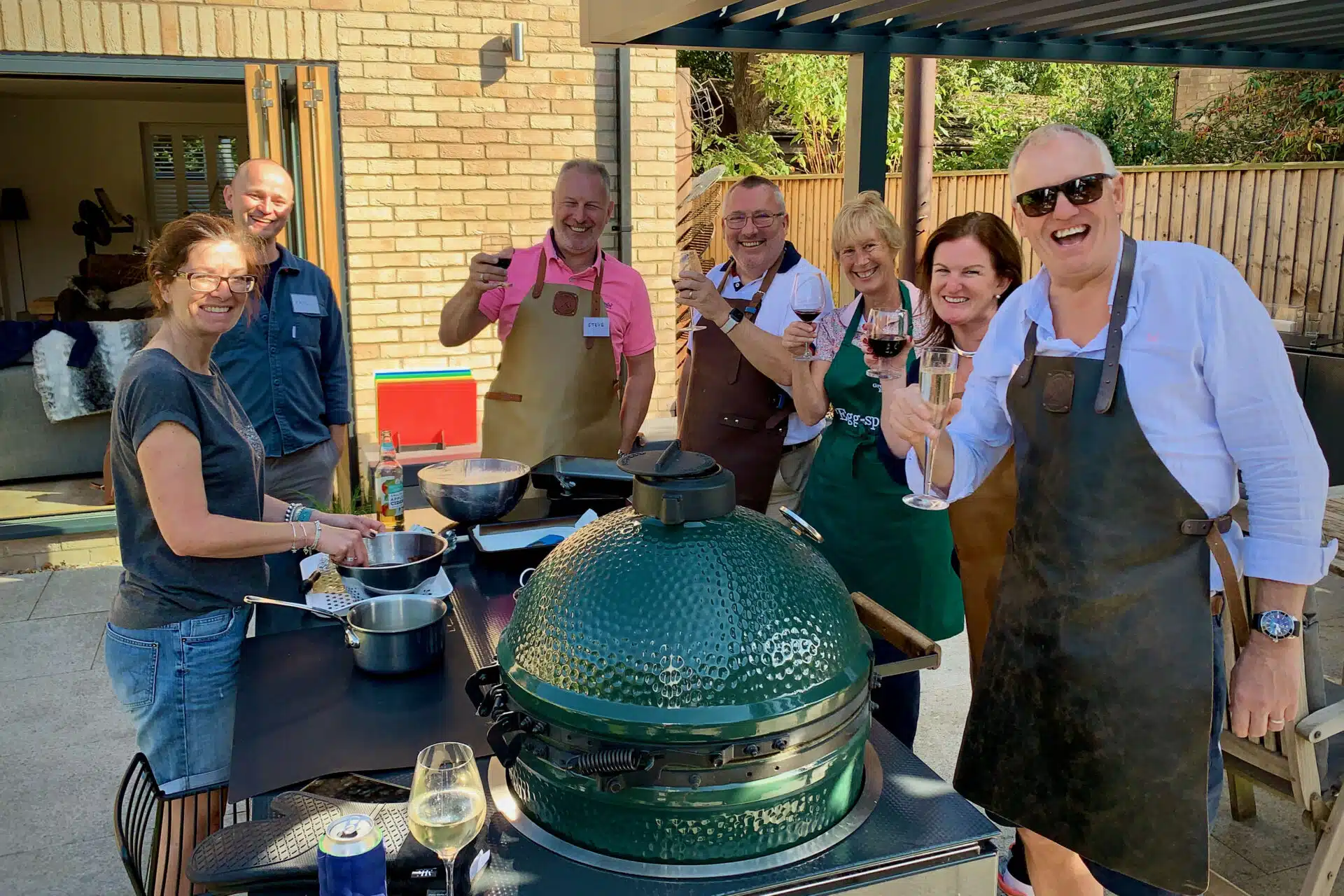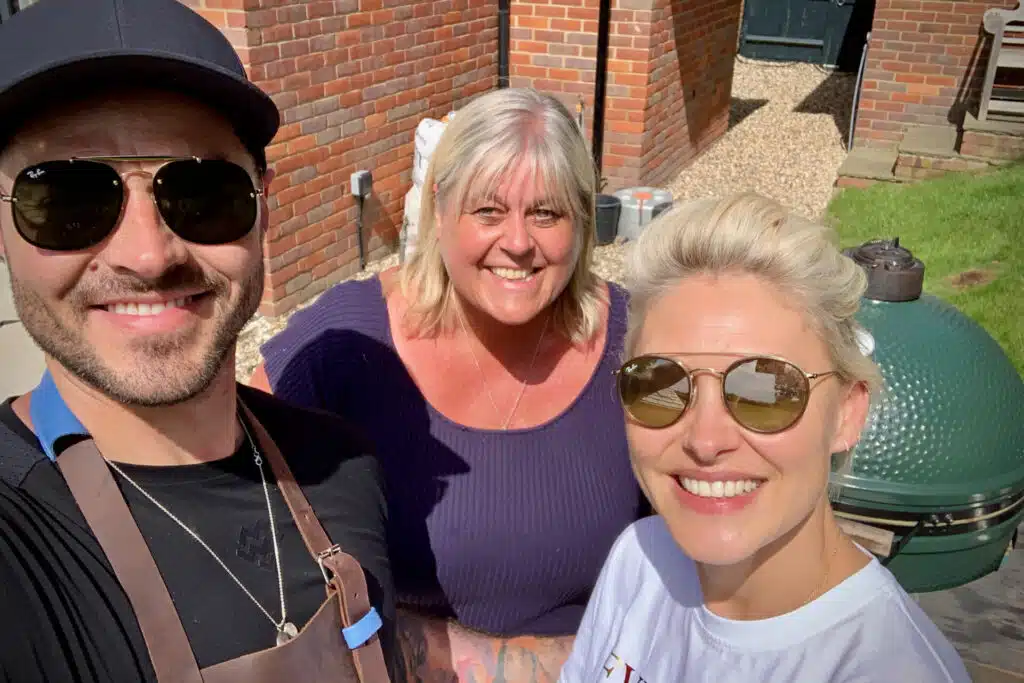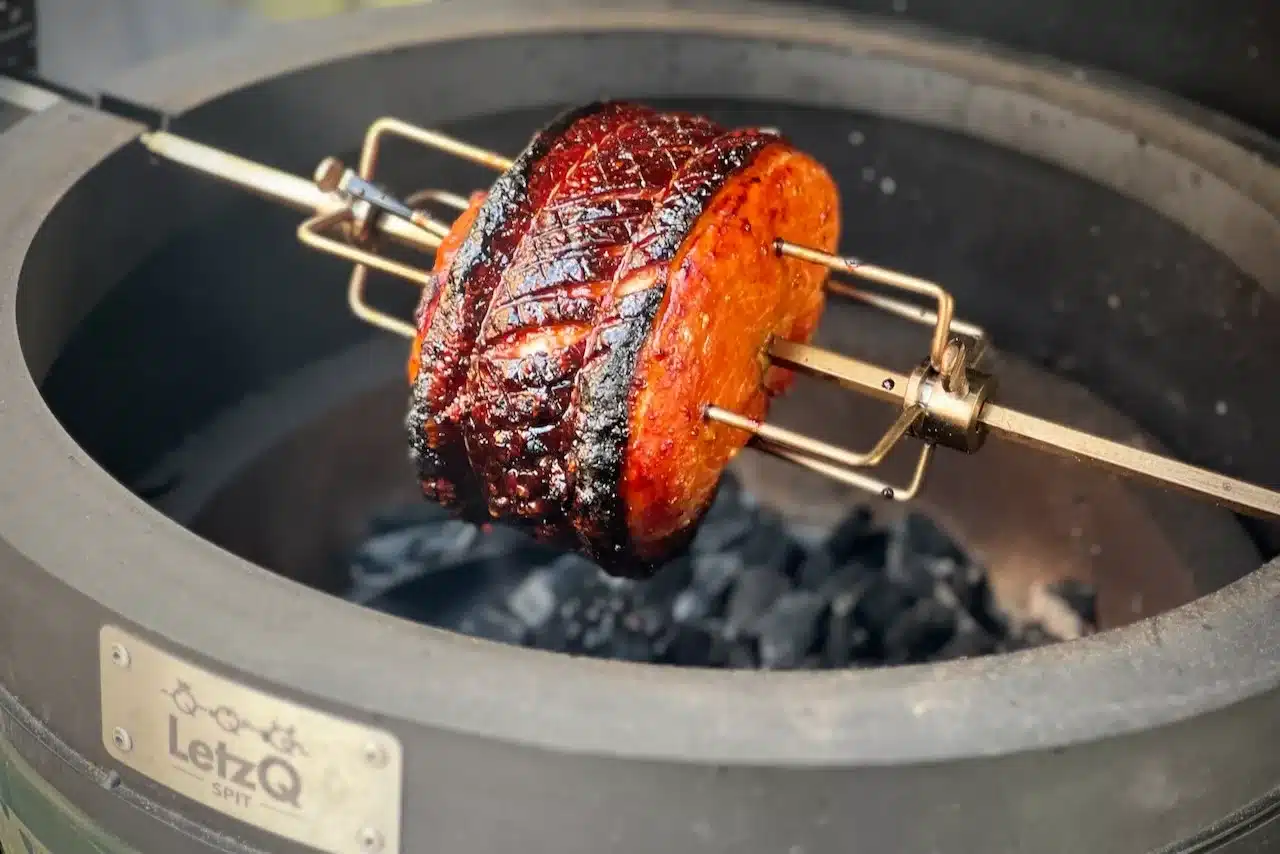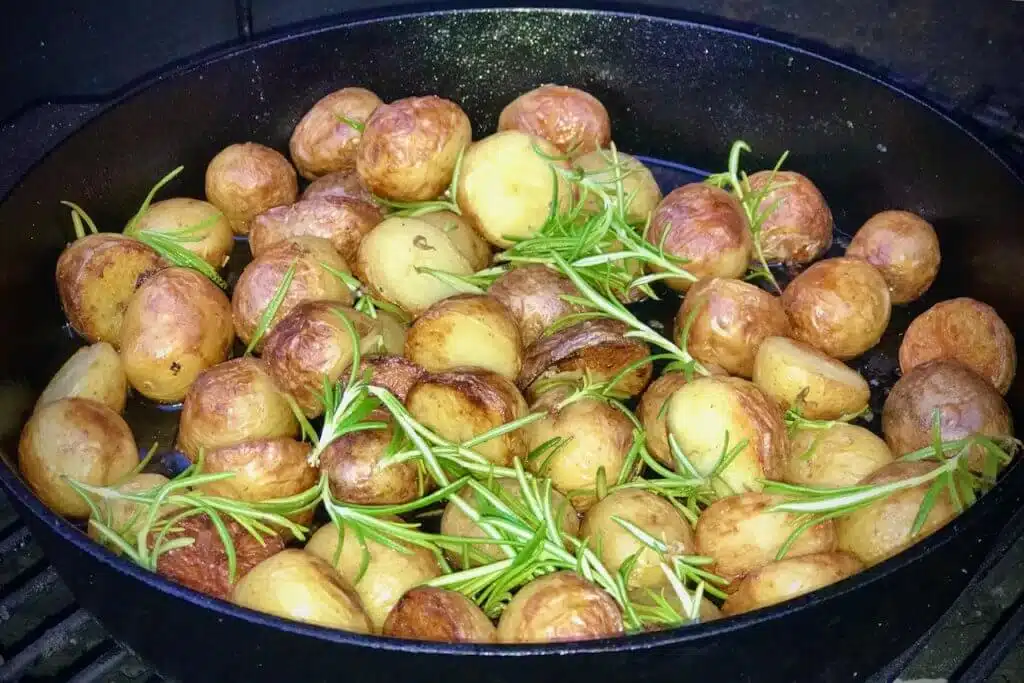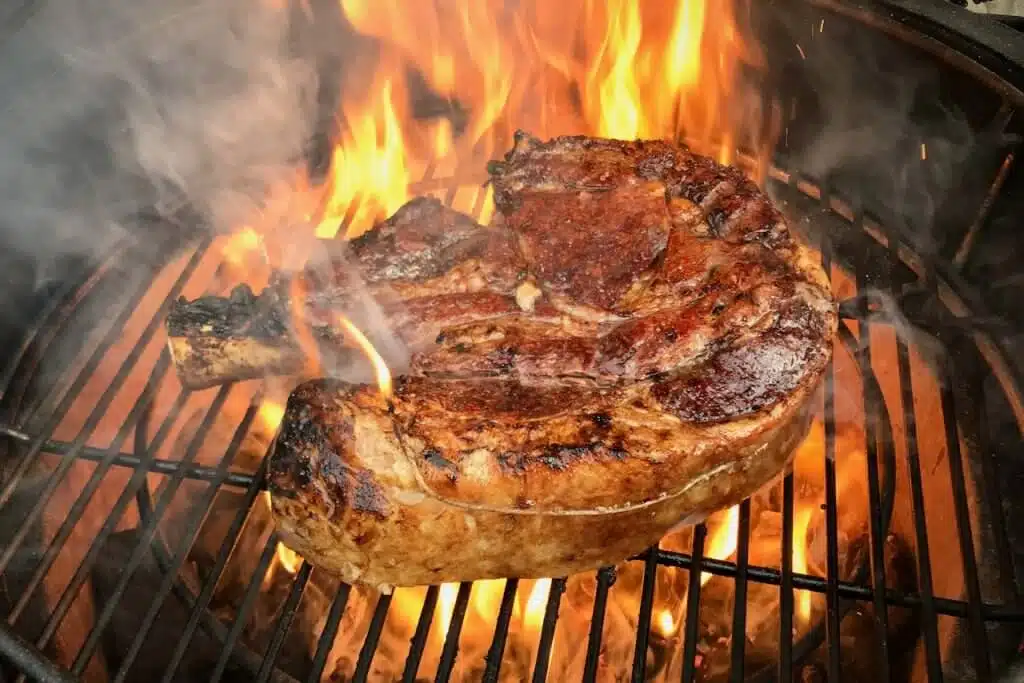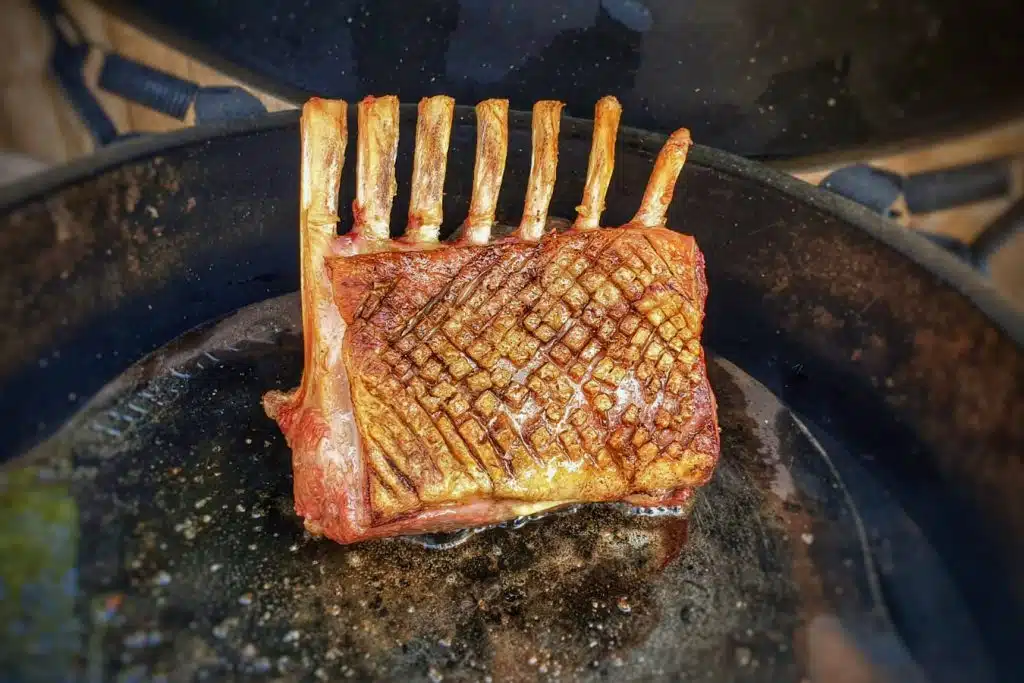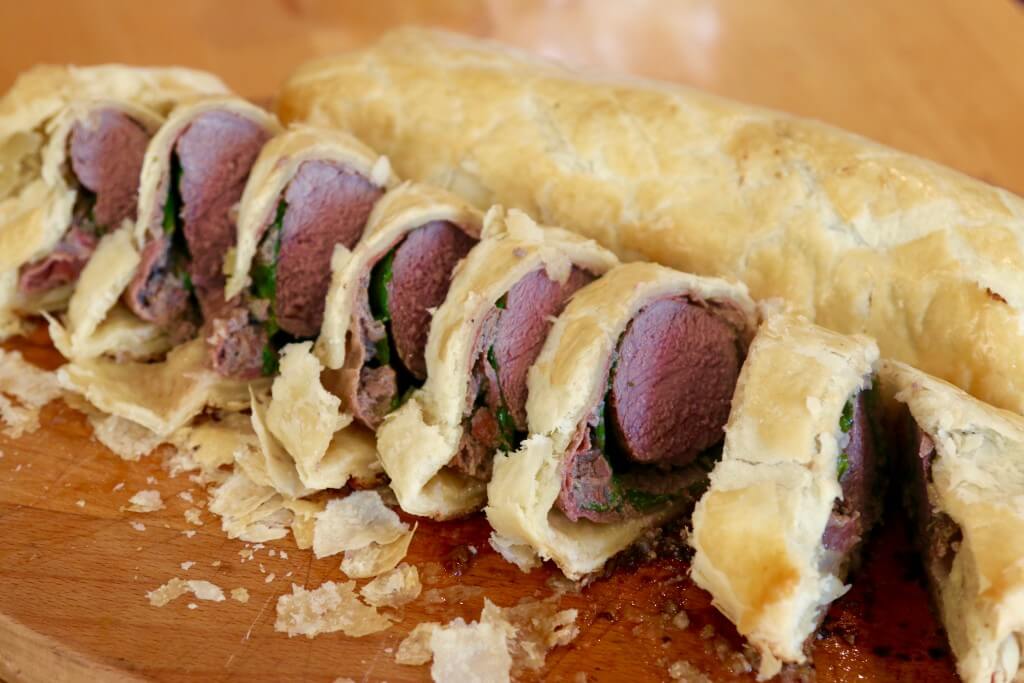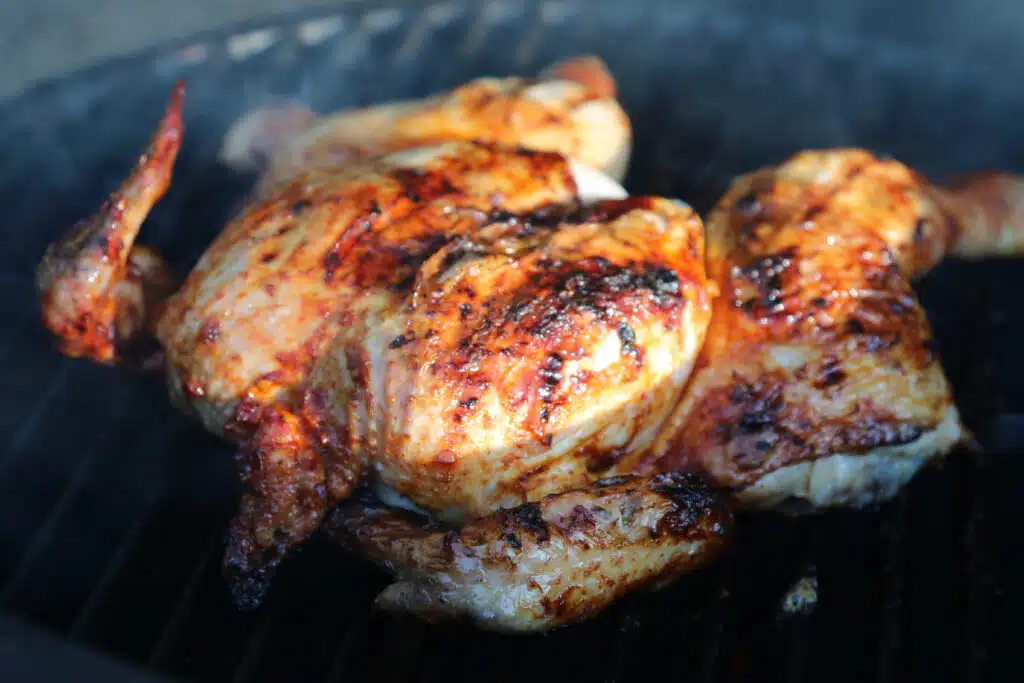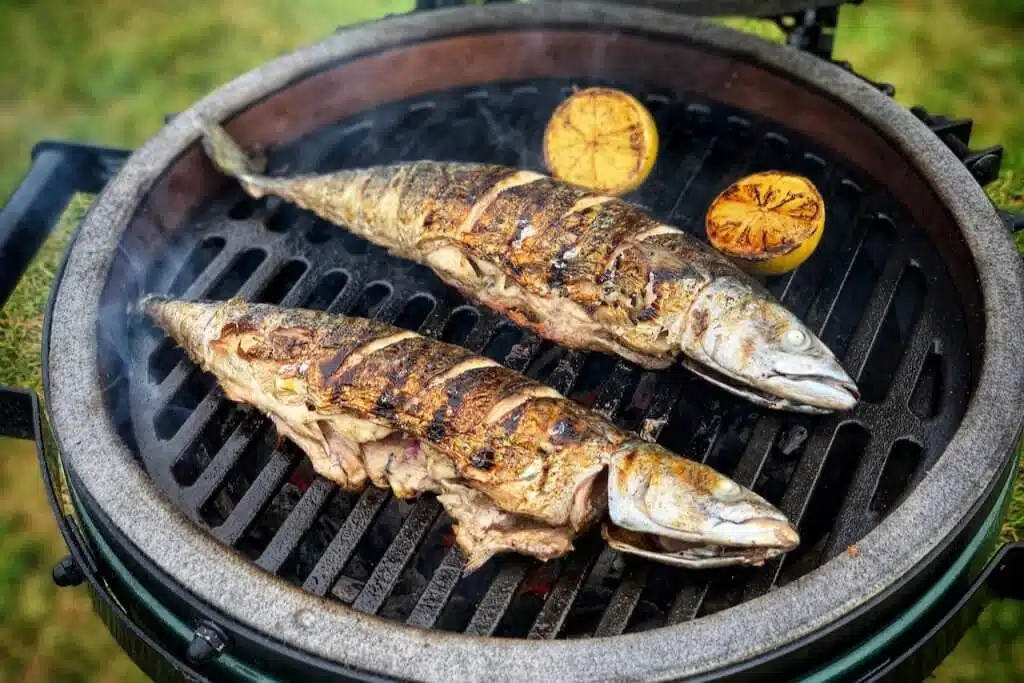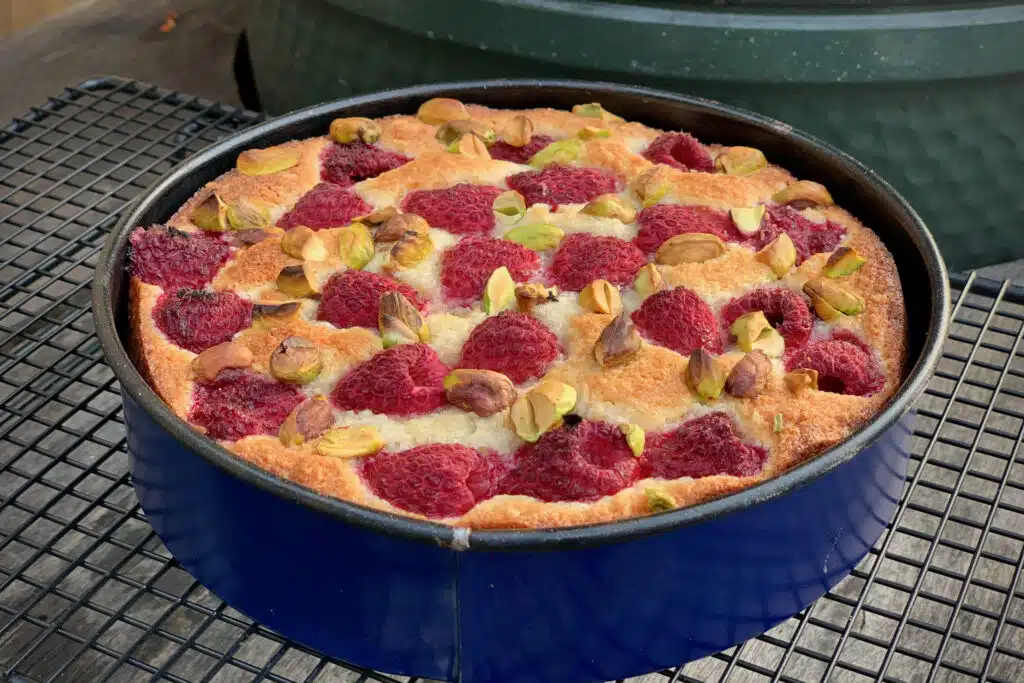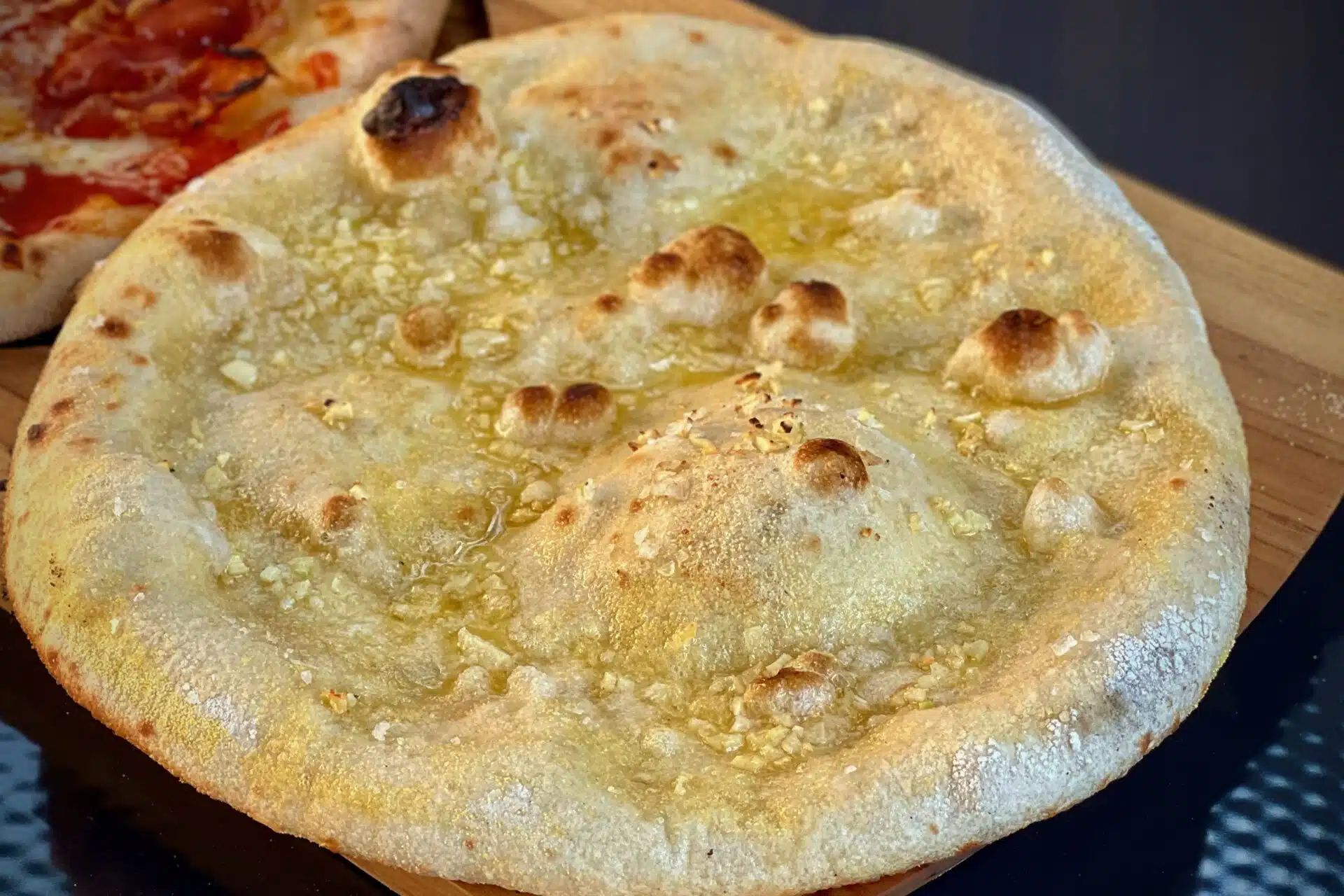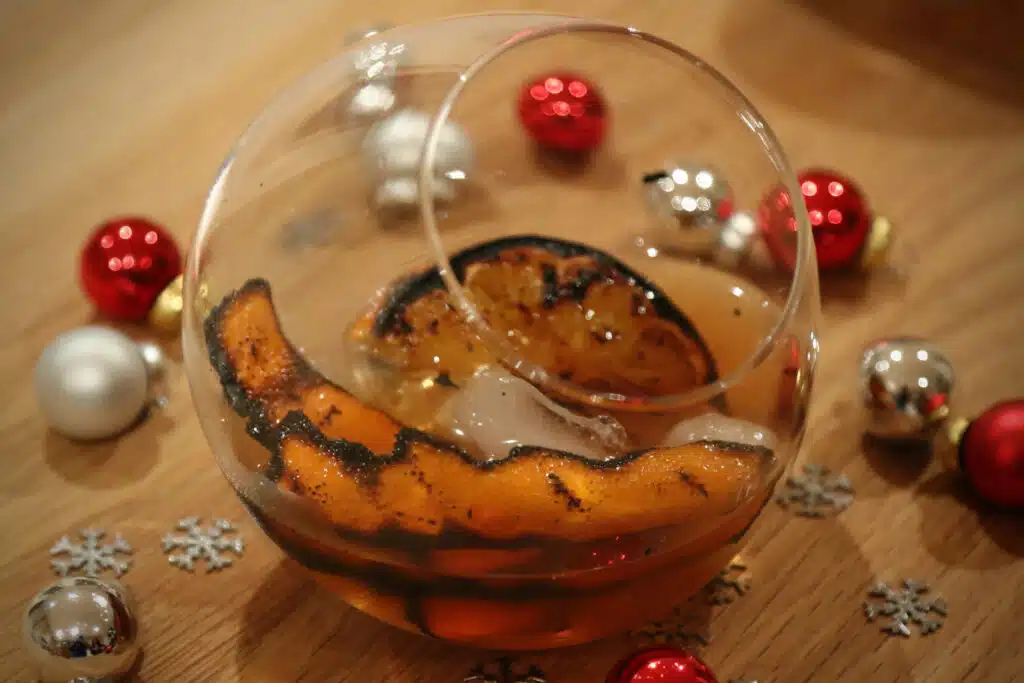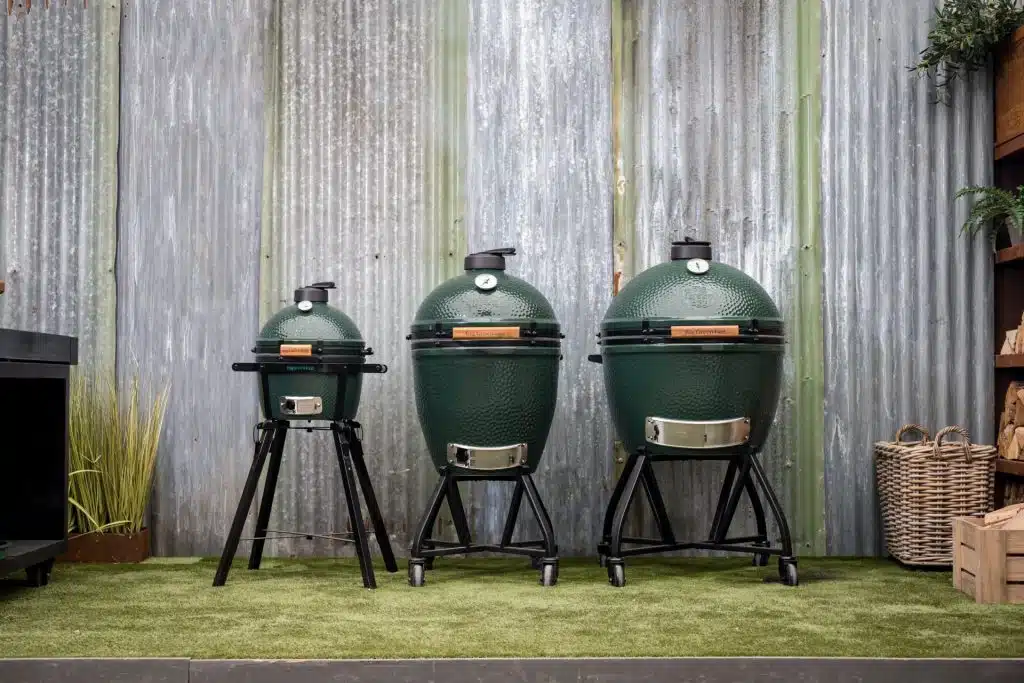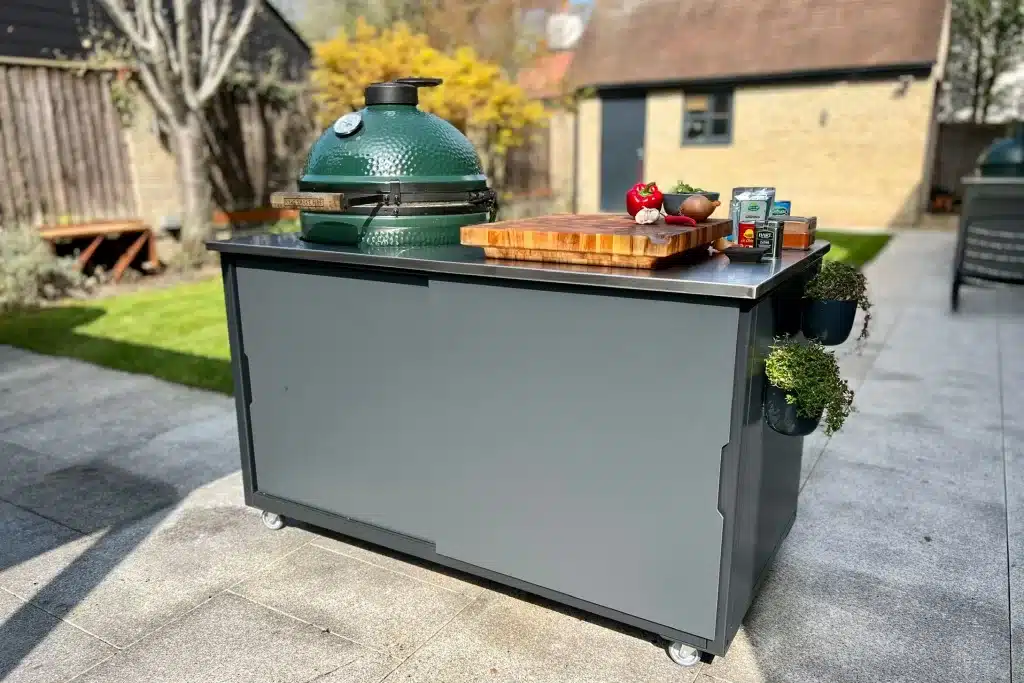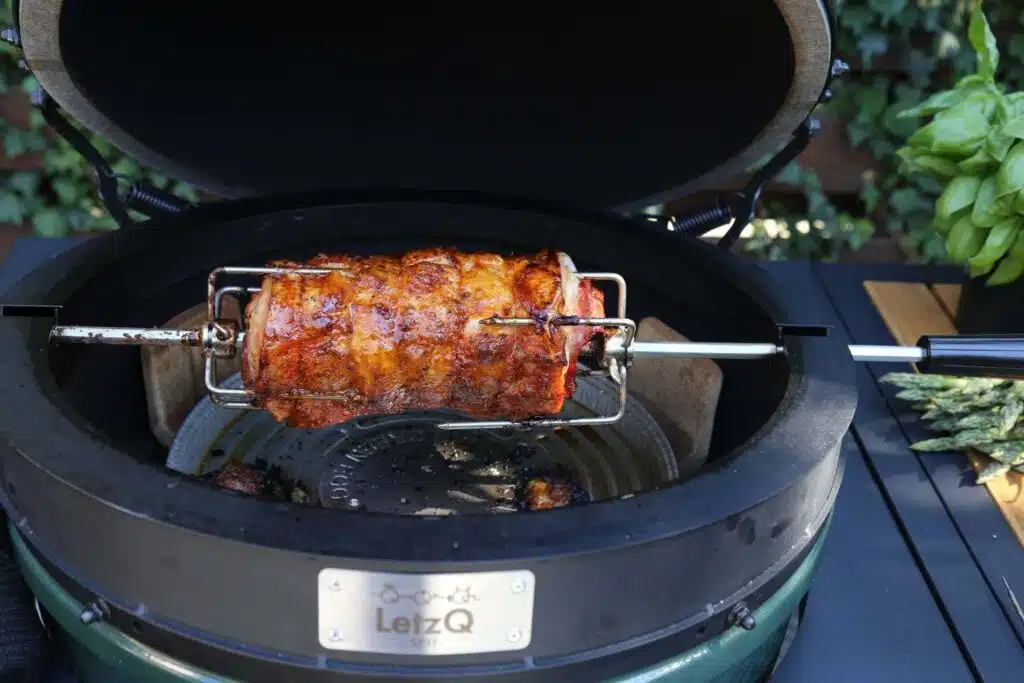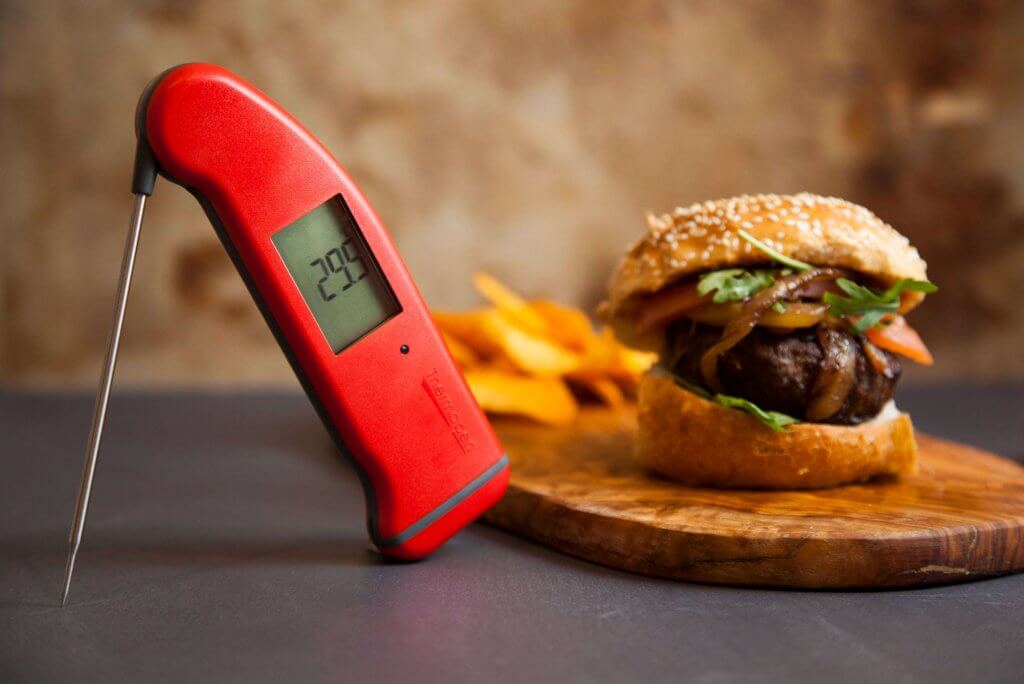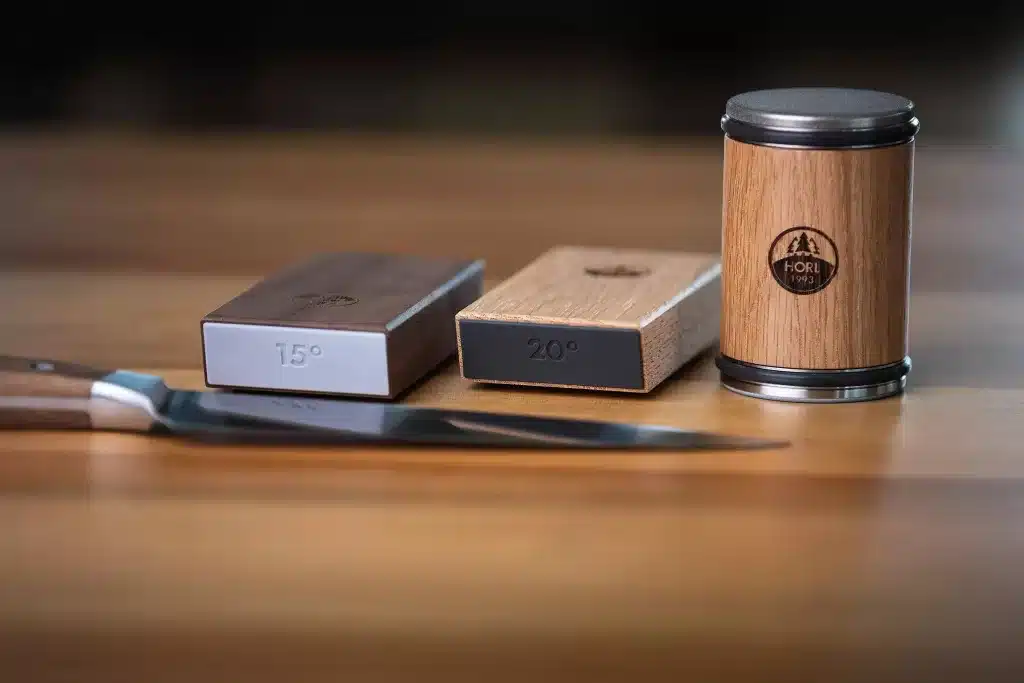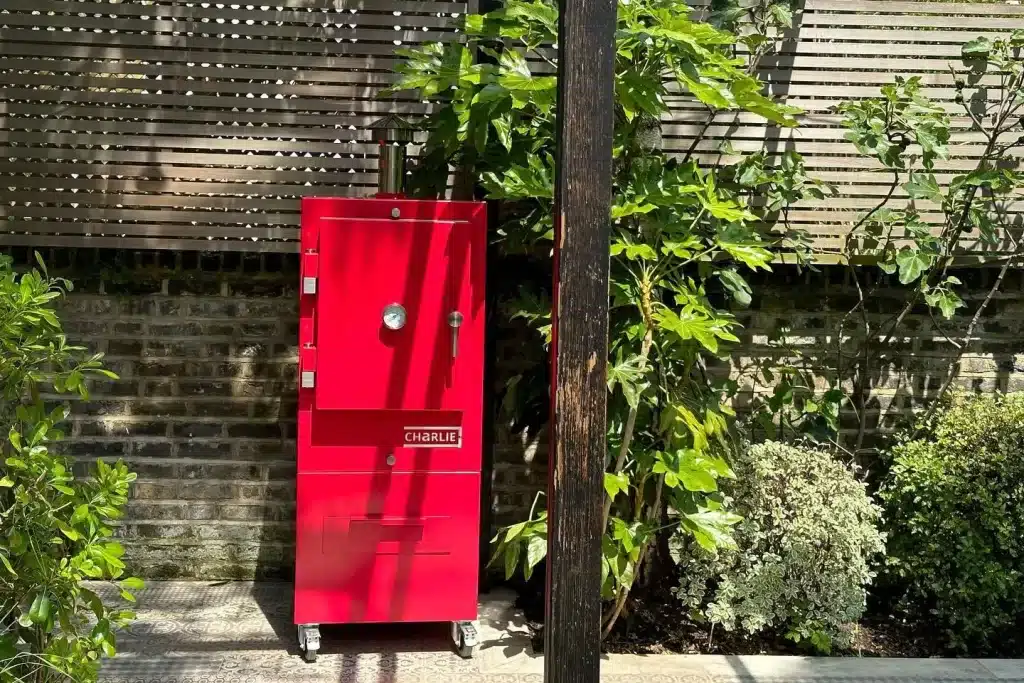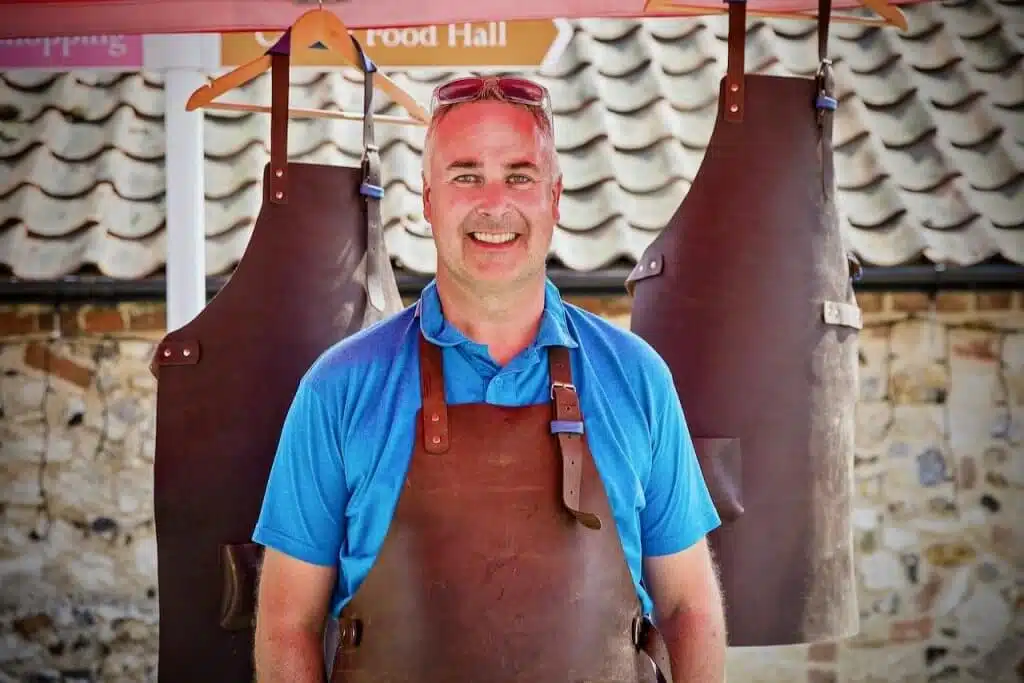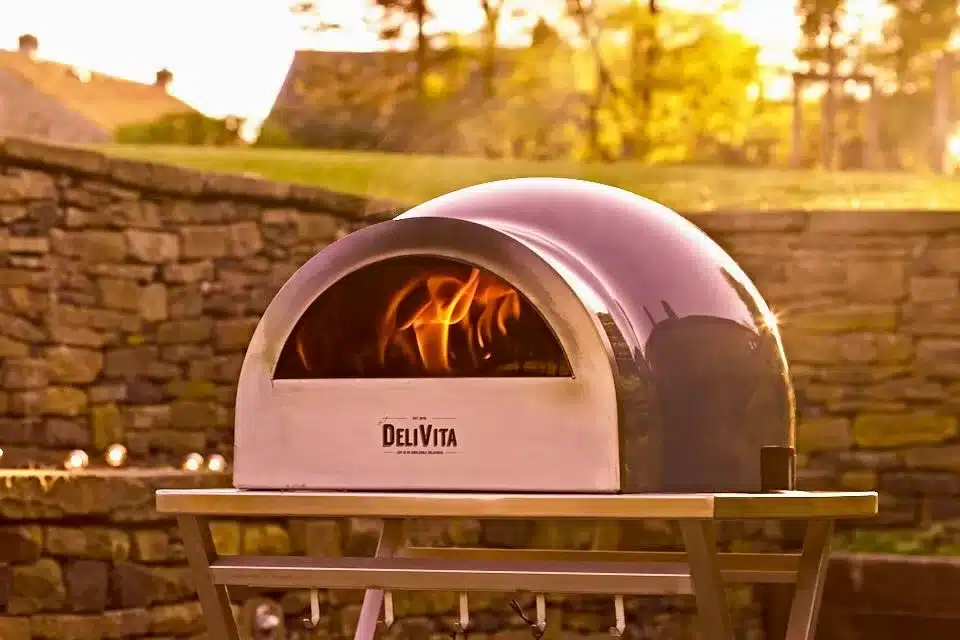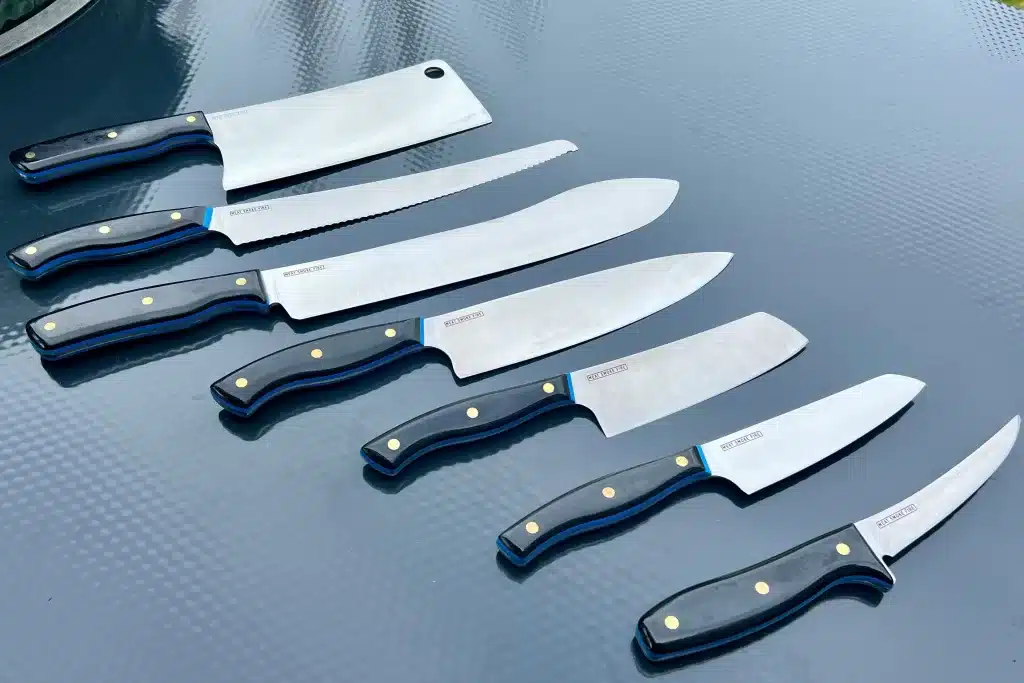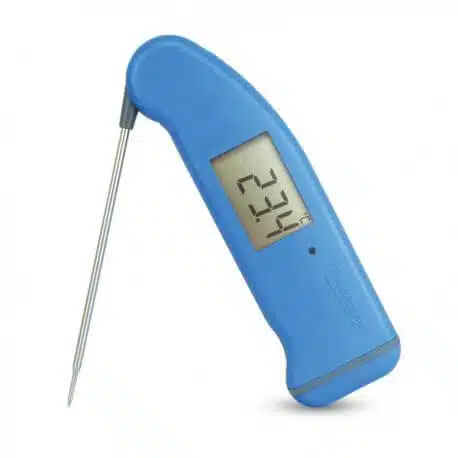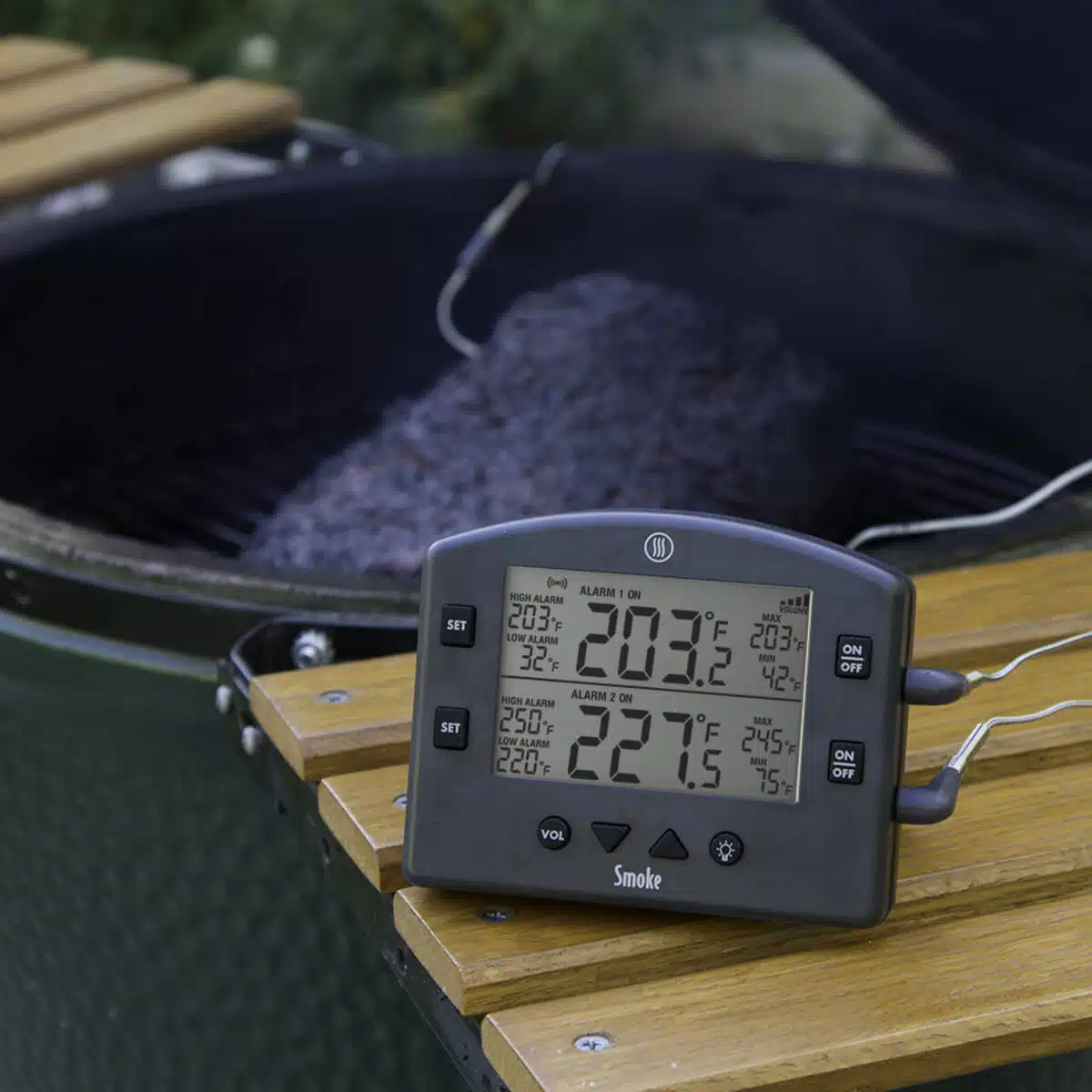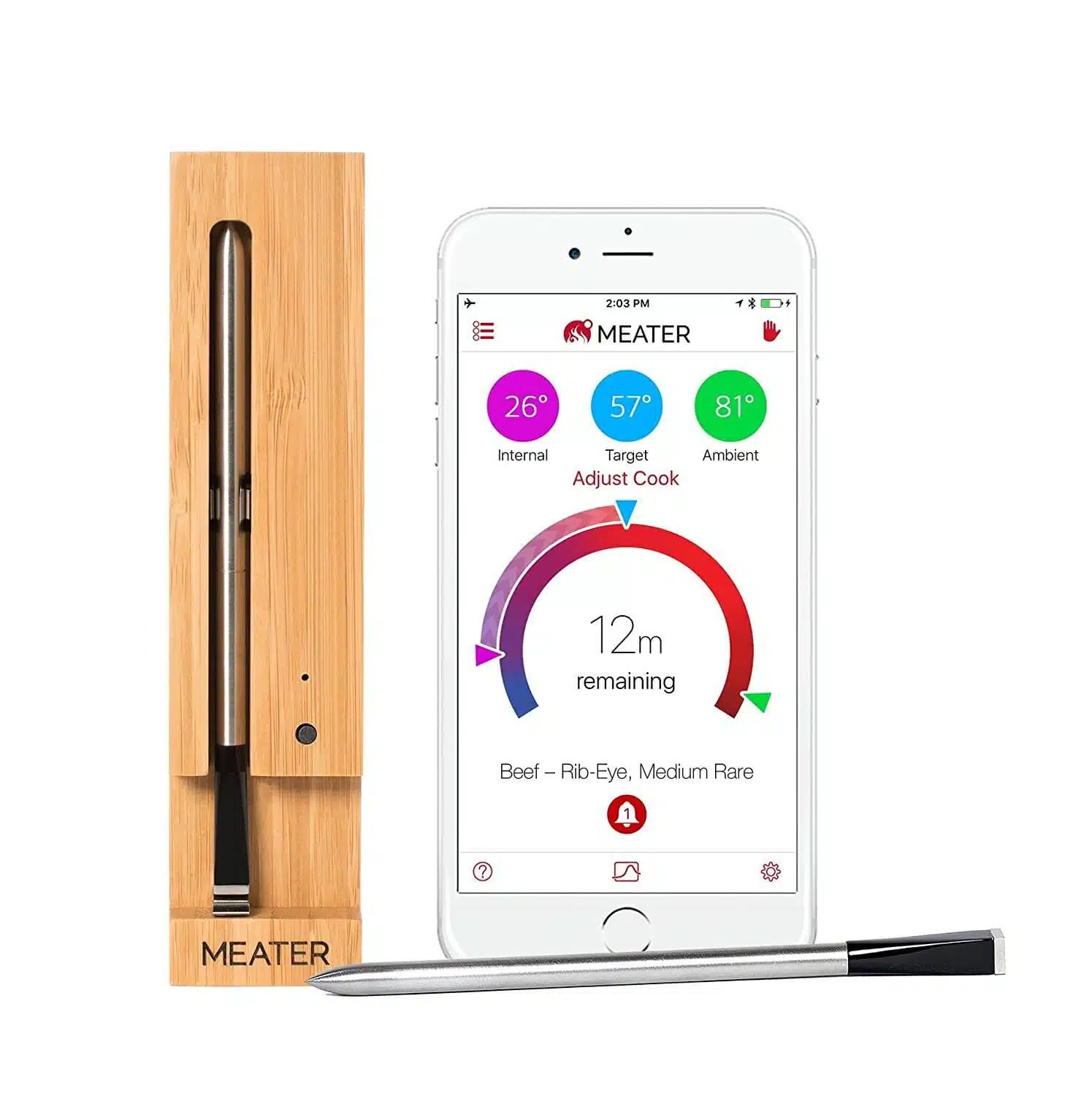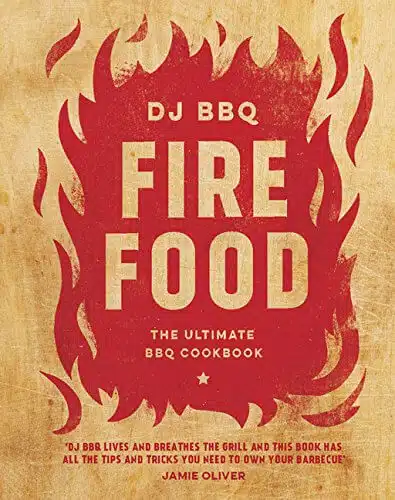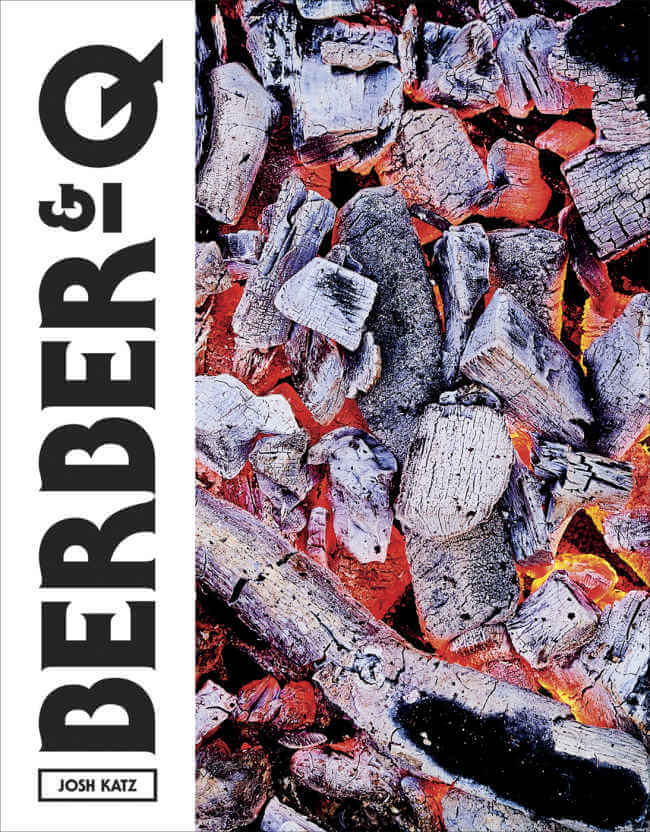


Reverse Seared Cote de Boeuf
The technique we used here was a reverse sear where we slowly raised the temperature of the whole piece of meat by cooking it at 110°C until its internal temperature was 53°C (5°C below medium rare). We then fired up the BBQ to about 250°C and seared the outside of the code de boeuf before resting it for about 15 minutes and serving in slices.
The initial cook was indirect, we used the plate setter feet up with the stainless grid on top. To that we added the meat and cooked slowly until the core temperature reached 53°C (5°C lower than the temperature we were aiming for as the last 5°C would be achieved when we seared the meat).
We then removed the plate setter and opened the air vents to raise the temp to 250°C. We used the stainless steel grid to sear the Picanha for about 3 minutes on each side.

Spicy Bean Burgers
These spicy bean burgers are very simple to make and you can do them in your Thermomix. If you’re going to use the Thermomix then I put all the ingredients into the bowl and then blend on setting 4 or 4.5 for about 5 or 6 seconds. You want the mix to be a little lumpy.
Chill the mixture and then I fry them on the cast iron plate at about 180°C for 3 to 4 minutes a side.
Dirty Carrots
The recipe is here for the dirty steak.
This is a recipe I have stolen from DJ BBQ (Christian Stevenson). His new book Fire Food is well worth getting with some great recipes in there.
We modified this recipe a little as when I first made it I didn’t have any maple syrup but did have honey. The downside to this, and I learnt the hard way at your house, is that honey burns more easily than maple syrup so maybe we should have stuck to the original recipe.
Anyway the recipe is to cook similar sized carrots on the coals with your Egg at 180°C. Turn the carrots every few minutes until they start to bend. Now take them off the Egg and add your stainless grid and a frying pan.
Into the frying add a teaspoon of cumin seeds, the carrots cut into 1 inch ling chunks, 2 tablespoons of balsamic vinegar and 2 tablespoons of maple syrup (or honey, but be careful).
Heat this for about 8 minutes but be careful not to burn it!

Falafel
Falafel are typically deep fried to give them a crispy outside. This recipe from my friends web site, Chickpeas and Charcoal, uses sesame seeds instead and then bakes the falafel making them much healthier.
These are super easy to make and are baked at 200°C on your baking stone. We served them with the smokey aubergine and tahini dip.
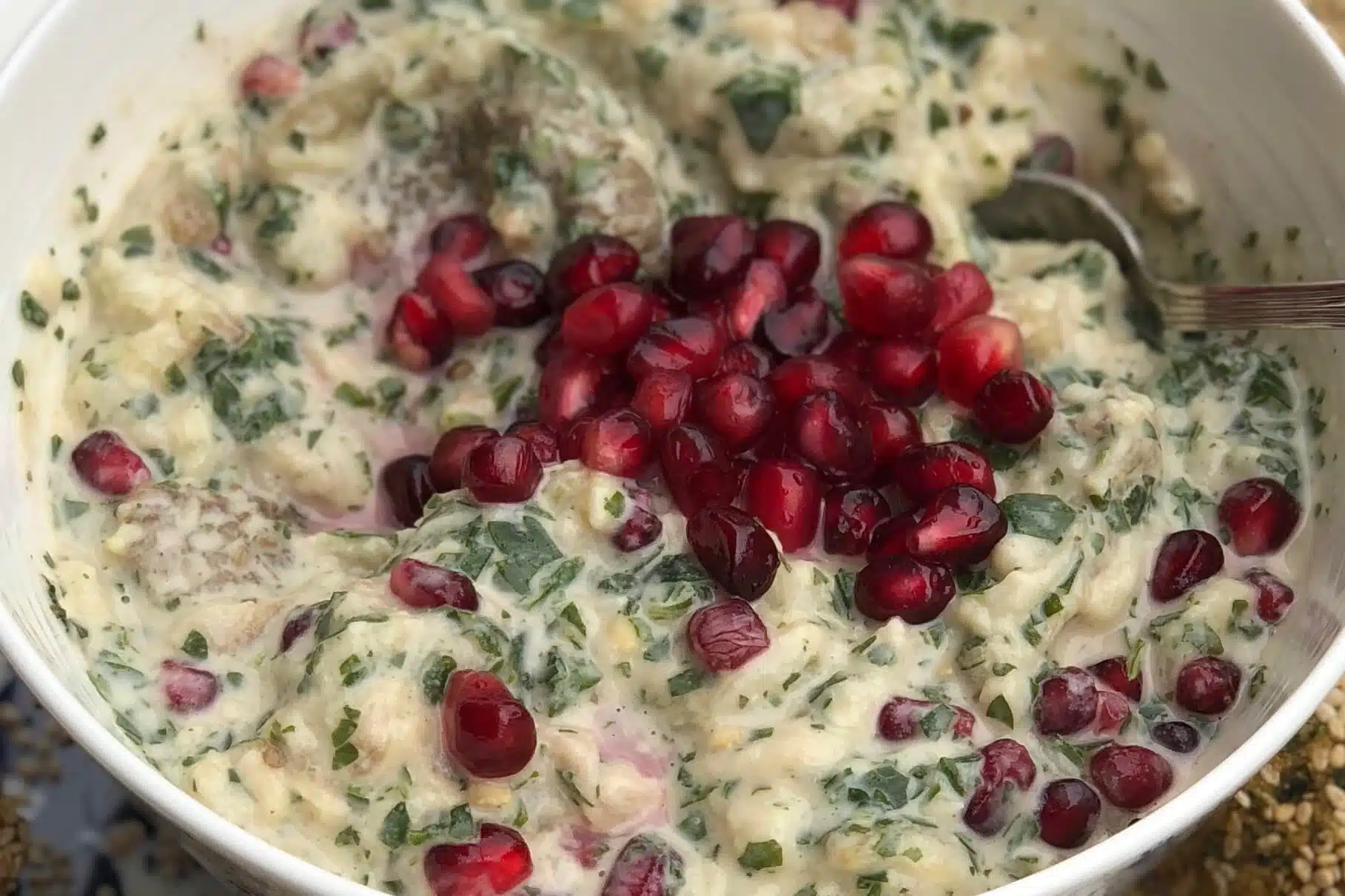
Smoked Aubergine and Tahini Dip
This lovely dip is very simple to make and can be prepared in advance of the meal and stored in the fridge. It’s topped off with burst in your mouth pomegranate seeds.
Set your Egg for a direct cook at 250°C. Make sure you pierce the skins of the aubergines before you roast them or you could end up covered in it if one explodes.
Once they’ve cooled you can scoop out the middle and mix with the other ingredients using a fork. Finally sprinkle over the pomegranate seeds.

Seafood Paella
Paella on the Big Green Egg is both easy and super tasty. The one we did didn’t have any wood smoke other than the charcoal but you could add a single chunk of sweet chestnut or apple wood to give it a really rich flavour.
We cooked this direct, with just the stainless grid at about 180°C.
I add the seafood about 10 minutes from the end. We got the clams to open by putting them on the gird outside of the pan if they hadn’t opened.

Focaccia
This Italian bread is really simple to make and an easy first go at baking on the Egg.
Make a batch of my basic bread recipe and let it rise. Knock it back and split into two portions. Push out each of these dough balls into the bottom of a 30cm x 20cm baking pan, lightly oil the top and cover with cling film. Put to one side to allow it to rise again.
When ready, poke it with your fingers to make the dimples. Drizzle generously with olive oil and sprinkle with salt and herbs (we used rosemary).
Setup your Egg for an indirect cook with the plate setter feet up, stainless steel grid on top and the baking/pizza stone on top of that. Get your Egg to 220°C and give the baking stone a while to heat up, probably 20 mins..
Cook your focaccia in the tin on the baking stone for about 15 minutes until it’s both golden brown on the top, but also crunchy on the bottom. Allow it to cool on a wire rack before serving.
Churros
These Spanish doughnuts are very easy, as long as you make the mixture correctly!
The key to making this very easy mixture, is to have the water boiling just before you put the flour into it. If you use water that isn’t boiling, the flour won’t cook and won’t thicken the batter, as I found out.
I use a cast iron wok on the Egg to cook them, this is probably the safest way of deep fat frying as you have the Egg’s lid to close should you have a fire. However keep the Egg to 180°C and all will be good.
They take a couple of minutes to cook and then they can be rolled in sugar or sugar with cinnamon.
Technique
What temperature should I cook at?

Cooking temp guide from AmazingRibs.com
What are the best cuts of steak?
The process of ageing meat allows the naturally present enzymes to break down the muscle, making it more tender. Most supermarkets only age their meat for 21 days, a good butcher will go 28 days or beyond, sometimes over 100 days. During this process the meat will dry out and shrink, loosing weight, so a dry aged steak will probably cost more per kilo as the butcher has had to store it and it’s also lost water content meaning the same piece of meat is now lighter.
Ageing will take place on whole joints before they are cut into steaks. Individual steaks shouldn’t be aged.
Having said all that here are my takes on different cuts:
- Rump steak – probably one of the most flavoursome cuts but because this muscle works harder than most of the others here, it can be a little tougher. My local butcher though will tell you it’s one of his favourite cuts because of the taste.
- Picanha – this is the rump cap. Cooked as we did it during the lesson, a reverse sear, this is my favourite joint.
- Sirloin – slightly more tender than rump but with slightly less flavour. Not too fatty. I normally avoid these.
- Rib-Eye – the next step up from Sirloin but with a great fat content. Think of fat as flavour. Even if you don’t eat it you can render it in a hot pan or vaporise it by cooking dirty. This will add flavour back to your steak. This is my go to steak when not cooking a Picanha.
- Fillet – Super tender as this muscle does next to nothing. However there isn’t much fat so there isn’t much flavour. If texture is your number 1 then this is the steak for you.
- T-Bone – this is bone with the fillet on one side and the sirloin on the other. It looks great.
- Cote de Boeuf – a bone in rib of beef, it’s just stunning but very expensive. It’s the ultimate steak if money is no object.
- Forerib of beef – this is normally a 3 or 4 bone rib joint. Do it as a Sunday roast or for Christmas. My favourite way of doing it is the reverse sear it. A 4 bone rib will cost about £130-£150.
- Beef short ribs or Jacobs Ladder – these are from the tougher part of the animal and need to be slow roasted for 8 or 9 hours. People rave about them but I can take or leave them, I’d much prefer most of the cuts above.
The Stall or Plateau explained
The best resource on this is at AmazingRibs.com. Give it and the other articles a read. It’s a superb site.
What settings are needed for specific temperatures?
Rest your meat
There is a great article discussing whether this is a myth but I still like to rest my meat: http://amazingribs.com/tips_and_technique/mythbusting_resting_meat.html
Reverse Sear
Using Planks Multiple Times
- Lemon and lime – lovely citrus flavours go well with fish
- Beer, cider or lager
Now instead of using the planks directly over the charcoal, use your ConvEGGtor (plate setter) feet up with the stainless steel grid and place the planks onto the stainless grid. You’ll still get the wood flavouring but it won’t burn your planks away.
Remember always place your planks onto a heat resistant surface when you take them off the Egg.
Using a cool box to rest meat
Once your meat is cooked, wrap it in several layers of aluminium foil and place it into your cool box. Cover then with bath towels and then shut the lid. Make sure you use old towels as you’ll never get the smell of BBQ out of them!
Cleaning your Egg
Clean the ash from your Egg every five or so cooks. Use the ashtool to do this.
Every 12-15 cooks take the whole of the inside of your Egg out and brush down with the dustpan and brush. Some people hoover out their Eggs but if you do this make sure it is cold, I had a customer set her Henry on fire.
Lighting your Egg
There is a great set of videos called the Tips Series that Big Green Egg UK put together.
Rust on your Egg cast iron cap and searing grid
You’ll need to repeat this process a couple of times a year.
Equipment
Probe Thermometer
Every BBQ chef should have a Thermapen 4. It’s by far the best probe thermometer on the market. It’s super accurate, fast reading and waterproof and has a backlit screen for use when it’s not so bright outside.
You can buy it in my shop and I have set you up with a discount code to use at the checkout, CHEESE10.
Wireless Thermometers
Thermoworks who make the Thermapen, have launched the Thermoworks Smoke in the UK. This is the best wireless thermometer in my opinion, it’s so easy to use and has super accurate probes. It’s not a replacment for a handheld probe thermometer like the Thermapen you already have but it does allow you to monitor cooks from the comfort of an armchair.
This was the device I used for the reverse seared picanha.
Bluetooth Thermometers
The Meater is a lovely piece of kit. It’s not quite as accurate as the other two thermometers but it does give a great guide and then you can use your Thermapen to check the cook, something I would always do anyway even when using the Thermoworks Smoke.
We saw that there was some temperature variance across the Picanha we cooked, so it’s always worth probing with a Thermapen to check.
You can buy this from Amazon.
Pans with handles that clip on and off
They’re a product from Tefal that I picked up several years ago in France before I got into the Big Green Egg as they were perfect for the camper van. They’re called Tefal Ingenio and are available in the UK now from Amazon.
The handle clips on and off easily so you pop the pan in the Egg and take the handle off. I use mine all the time. They’re great for cooking tarte tatin.
Just be careful with non stick ones that you don’t get them too hot as the non-stick will start to break down.
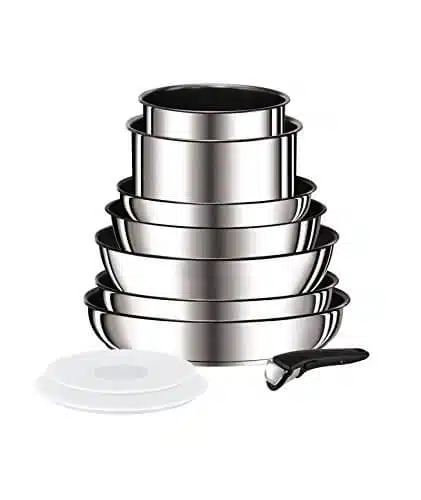
Recommended Cook Books
Fire Food
Just launched by DJ BBQ (Christian Stevenson). DJ BBQ does a lot of cooking with Jamie Oliver. There are some fabulous and easy recipes in here.
There is a whole section on dirty cooking (cooking directly on the charcaol). I have done the dirty carrots and can highly recommend them.
Berber-Q
This a new book I have just bought, it has tonnes of veggie and vegan dishes in it. It will be perfect for you Beth. I’ve yet to do a many of the recipes but it has Helena excited.
Of course it’s available from Amazon.
